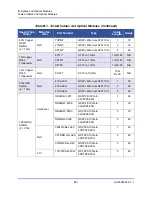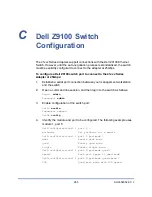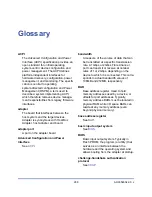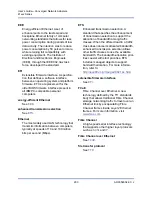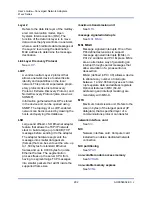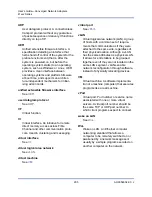
295
AH0054602-00 J
User’s Guide—Converged Network Adapters
41
xxx
Series
UDP
User datagram protocol. A connectionless
transport protocol without any guarantee
of packet sequence or delivery. It functions
directly on top of IP.
UEFI
Unified extensible firmware interface. A
specification detailing an interface that
helps hand off control of the system for the
preboot environment (that is, after the
system is powered on, but before the
operating system starts) to an operating
system, such as Windows or Linux. UEFI
provides a clean interface between
operating systems and platform firmware
at boot time, and supports an architec-
ture-independent mechanism for initial-
izing add-in cards.
unified extensible firmware interface
See
.
user datagram protocol
See
VF
Virtual function.
VI
Virtual interface. An initiative for remote
direct memory access across Fibre
Channel and other communication proto-
cols. Used in clustering and messaging.
virtual interface
See
virtual logical area network
See
.
virtual machine
See
virtual port
vLAN
Virtual logical area network (LAN). A group
of hosts with a common set of require-
ments that communicate as if they were
attached to the same wire, regardless of
their physical location. Although a vLAN
has the same attributes as a physical LAN,
it allows for end stations to be grouped
together even if they are not located on the
same LAN segment. vLANs enable
network reconfiguration through software,
instead of physically relocating devices.
VM
Virtual machine. A software implementa-
tion of a machine (computer) that executes
programs like a real machine.
vPort
Virtual port. Port number or service name
associated with one or more virtual
servers. A virtual port number should be
the same TCP or UDP port number to
which client programs expect to connect.
wake on LAN
WoL
Wake on LAN. An Ethernet computer
networking standard that allows a
computer to be remotely switched on or
awakened by a network message sent
usually by a simple program executed on
another computer on the network.

